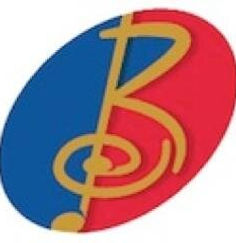
Rockville Brass Band, formed on March 6, 1976, is a band in the British tradition. Brass bands formed in the North of England and in the U.S. in the middle of the 19th century spurred on by two factors, the invention of the piston valve for brass instruments and an influx of amateur musicians returning home after the Napoleonic War.
In the U.S. the movement went in to steep decline and all but disappeared by the First World War. At the same time in England, toward the end of the century, these bands, often sponsored by a local factory or colliery, started to compete against each other. These contests were fiercely fought and became the bedrock of banding. As banding spread across Britain, and then across the world, so contesting was taken with it – bands continue to compete in contests. To ensure that there was a “level playing field,” the competition organizers needed to standardize the orchestration of the bands taking part. This standard is still in use today; all brass bands have the same instrumentation.
People unfamiliar with brass bands are surprised to see that we have no woodwind, only brass instruments and percussion. And, we don’t have trumpets or French horns either!
All brass bands have:
-
1 cornet in Eb (known as a soprano cornet);
-
9 cornets in Bb (playing 4 separate parts: 4 solo cornets, one repiano, two seconds and two thirds);
-
1 flugel horn;
-
3 tenor horns (sometimes known as alto horns in the U.S.);
-
2 baritones (sometimes known as tenor horns in the U.S.);
-
2 euphoniums (sometimes known as baritones in the U.S., and tenor tubas in orchestral writing);
-
2 tenor trombones;
-
1 bass trombone;
-
2 basses in Eb (known as tubas in orchestral writing);
-
2 basses in Bb (known as contrabass tubas in orchestral writing);
-
2 or 3 percussionists playing a variety of instruments, including drum kit, timpani and glockenspiel (known as bells in the U.S.
The newcomer to the genre is often surprised to find that, with the exception of the bass trombone and percussion parts, all parts are written in the treble clef, even the Bb bass (they sound two octaves and a tone lower than written). This helps group teaching, often an aspect of brass bands especially in the native Britain, and permits players to switch instruments when a vacancy appears in the band’s line-up.
For further background reading see
-
The Complete Bandmaster, Dr. Denis Wright OBE (Macmillan, 1963, ASIN B0006AYM8A)
-
How to Write for Brass Bands (http://www.bandsman.co.uk/writing.htm)
-
The past and future of brass bands (http://www.bandsman.co.uk/downloads/history.pdf)
-
You may also like to visit the website of some brass bands:
-
Black Dyke Mills Band (http://www.blackdykeband.co.uk/)
-
Grimethorpe Colliery Band (http://www.grimethorpeband.com/)
-
Fairey Band (http://www.faireyband.com/)
-
Fodens Brass Band (http://www.fodensband.co.uk/)
Web: www.rockvillebrassband.org
Location: Rockville, MD, USA
Founded: March 6, 1976
Member: Soprano Cornet - Paul Klontz
Cornet - Jeff Bartlett, Devon Callan, Alicia Daubert, Curt Hansen, Mark Kaprelian
Bill Krueger, Walter Lewis, Stan Modjesky, Richard Stark, Norman Wallis,Steve Wigler
Stephen Wood
Flugelhorn - Michael Arrington
Tenor Horn - Curt Anstine, Michael Holliday, Ellen Jay**, Charles Lietwiler*
Chris Porter
Baritone - Zack Itteilag, Eric Singer
Trombone - Gerald Hendrickson, Katie Rodda
Bass Trombone, Greg McDonald
Euphonium - Kami Ferrie, Joshua Hoffman
Eb Bass - Norman Cary, Les Collins, Andrea Crews, Craig Kesner, Zach Kopin
Bb Bass - Toby Halliday
Percussion - Ben Downey, Nadine Markham-Itteilag
Rockville Brass Band









